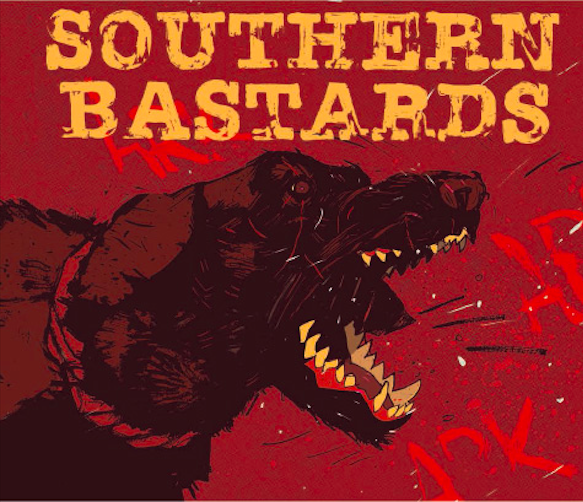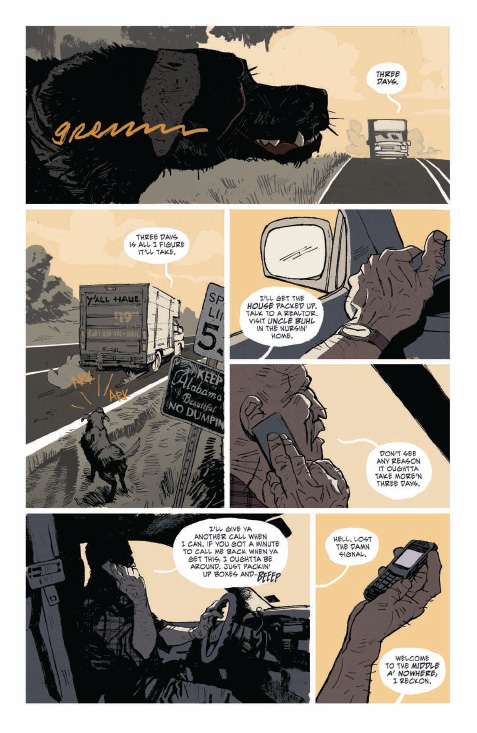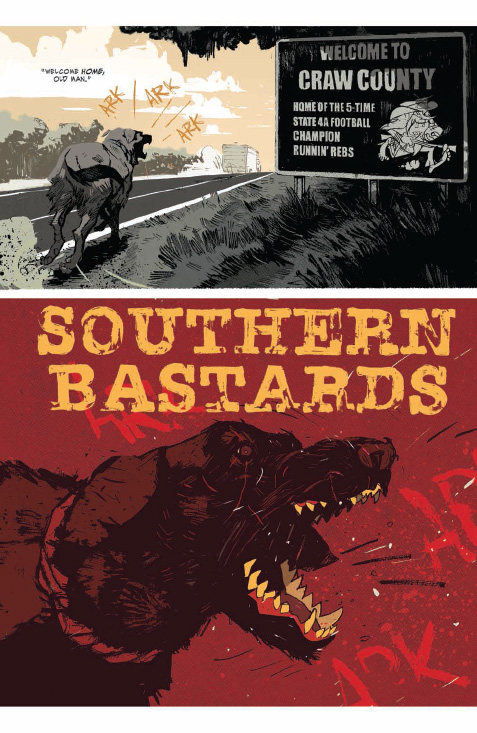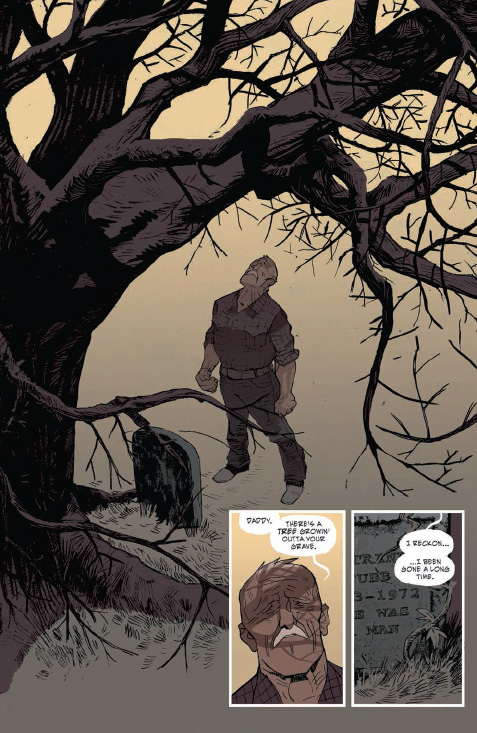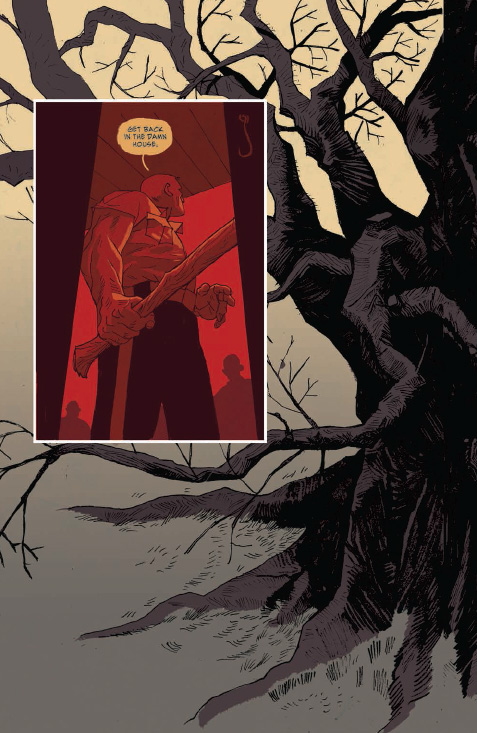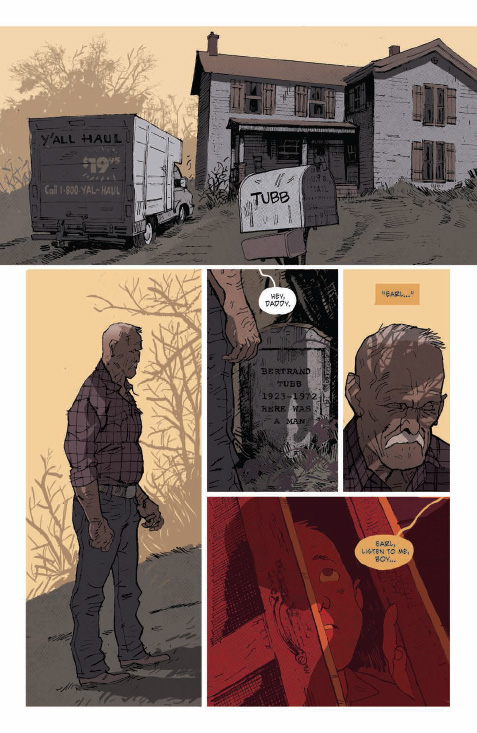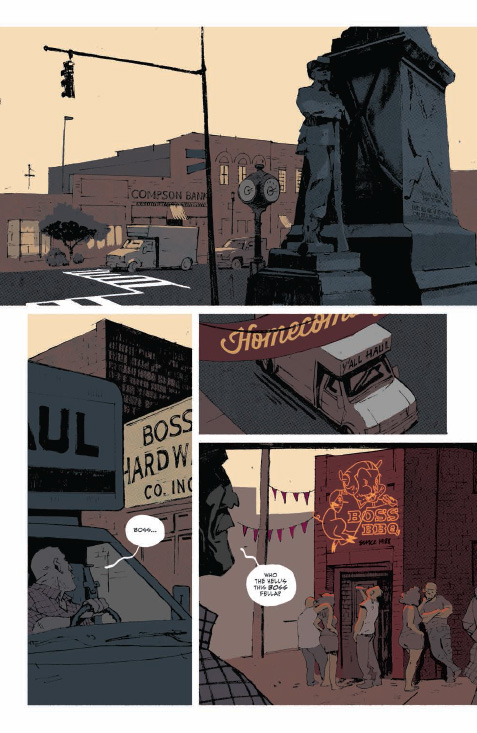It feels like we’re in the midst of a transitional period for Jason Aaron. His first original series, the hardboiled Native American crime noir Scalped, finished in 2012 and, although he’s turned in some excellent work at Marvel recently, the debut of Southern Bastards from Aaron and artist Jason Latour this week marks his return to creator-owned work after nearly two years. And if the first issue is any indicator, it could be his meanest, most personal work to date. Southern Bastards #1 feels like a steel-toed boot on your neck.
The conceit of this issue is the same kind of perfect capsule concept Aaron’s first issue of Scalped was: Earl Tubb, the aging son of a local legend sheriff, has returned to Craw County, Alabama to sell his uncle’s old home and discovers the town he put in his rearview years ago has become even nastier. If that sounds familiar, it’s probably because you’ve seen Walking Tall (either version) or read more than a few Elmore Leonard novels. But what keeps Southern Bastards #1 from not feeling like a retread of Aaron’s on-his-sleeve inspirations is the precision with which this issue is laid out. Aaron tantalizes the reader by revealing just enough about Tubb and Craw County to keep us hooked. We’re not totally clear on why one of Earl’s old high school classmates is in such dire straits with local crimelord Euless Boss or why Earl left the town forty years ago. Even our conceptions about the nature of Earl’s relationship with his long-dead father take a huge left turn by the end of the issue. First issues are important in terms of setting tone and giving the reader an idea of what to expect going forward and Southern Bastards seems to promise that those expectations will be fucked with.
Even with all the exposition and set-up that this issue requires, Aaron makes it all feel like it has room to breathe. Quieter moments (or what passes for quieter moments in this book) like Boss’ redneck underling pissing in a dog’s eyes are punctuated with that same character getting a faceful of scalding french fry oil. Southern Bastards has that indescribable subdued feel that we associate with the South; this is a comic book that sweats through its shirt. A big part of why this tone shines through here is Latour’s art, specifically his color palette choices. While the bulk of the book is mustard yellows, light grays, and dark blacks, the book suddenly shifts to blood red at moments of violence or terror. Latour does this practically right off the bat with the book’s title panel on page two, and there’s something indescribably ominous about the way the “SOUTHERN BASTARDS” logo rests above a mangy dog barking and snarling at a passing truck, like that’s the whole series in micro.
There’s a real electricity to Southern Bastards #1 and if I had to wager why that is, it’s because it feels like Aaron’s entire body of work, always heavy on tobacco-spitting villains and engine oil ugliness, has all been leading up to this. The brief creator statements Aaron and Latour give in the back of the book pitch the book as a love letter to their hometowns (Aaron grew up in Alabama, Latour’s from North Carolina) and a condemnation of the men they grew up hating. If this strong first issue is any indicator, Southern Bastards could end up being the most important comic on the subject of shitkickers since Garth Ennis’ Preacher.
Southern Bastards #1 is on sale tomorrow in print, through Comixology and as a DRM-free pdf from Image’s digital comics storefront. Check out a six page preview of the issue below!

